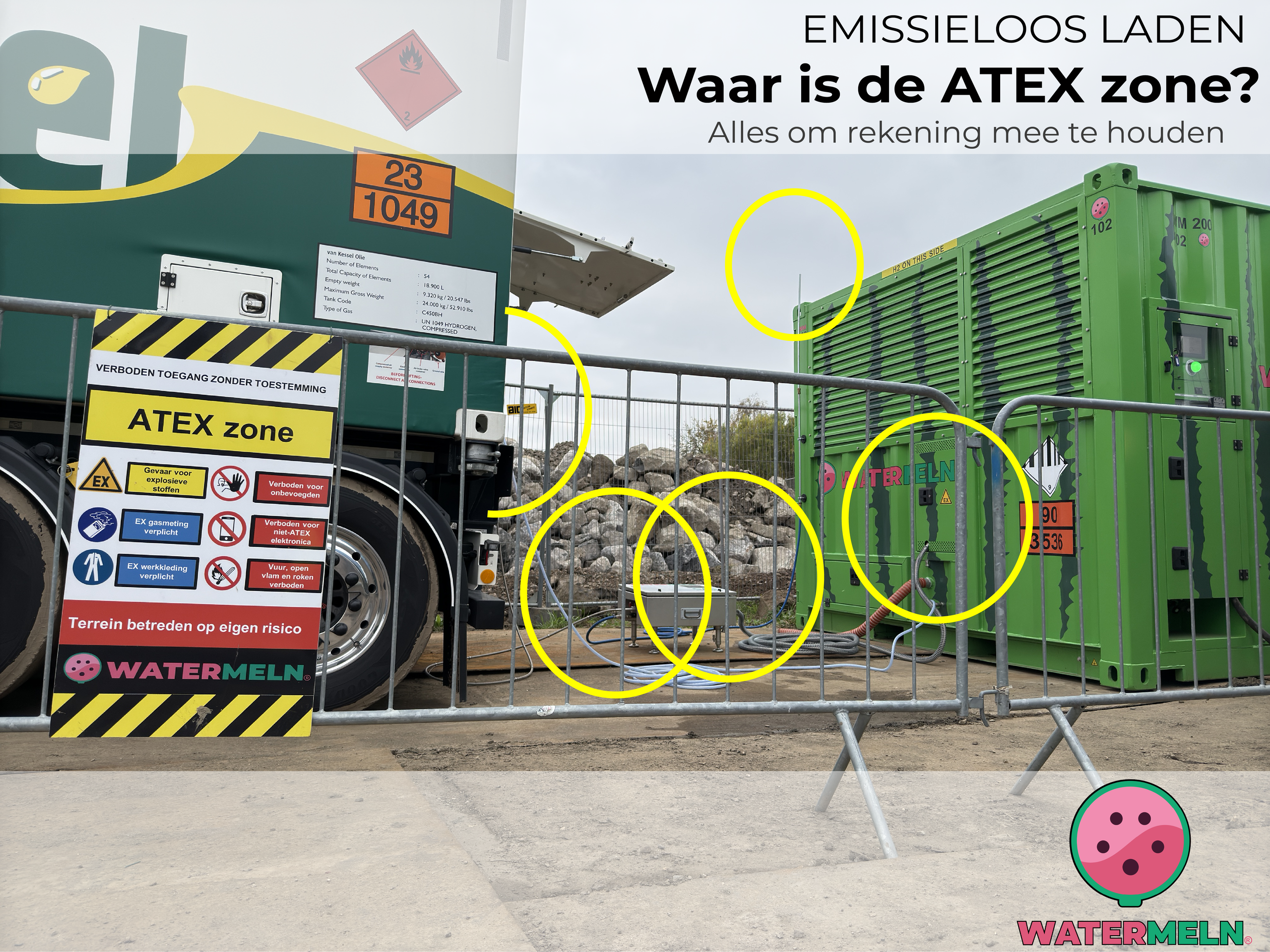
Where is the ATEX zone?
Here's what you need to pay attention to!
At Watermeln 🍉 ⚡, we consider safety essential, especially when it comes to working with hydrogen. But where does an ATEX zone actually arise, and why is this important? Time for an explanation!
An ATEX zone, such as Zone 2, is classified in places where there is a small chance that an explosive gas mixture may occur. This happens, for example, in systems where hydrogen is used, both outside and inside a device. But how do you determine exactly where the zone is? The answer often lies in the connections.
🔗 Difference between connections
- Welded connection: This is the king of connections! Welded means that there is no chance of leakage. A welded connection does not let anything through, so no ATEX zone is required.
- Screw connection: This is where the risks come in. Screw threads, however strong, can always offer a minuscule chance of leakage. This makes it a potential leak source and therefore an ATEX Zone 2.
- Click connection: Just like screw connections, click connections are susceptible to leaks. The chance is small, but it exists, so this also makes it an ATEX Zone 2.
💡 In short: Everything that is not welded is automatically considered a potential leak source and therefore gets an ATEX zone. This way we ensure that we properly identify risks and can work safely with hydrogen.
At Watermeln 🍉 ⚡ we work with the highest standards to guarantee safety, so that your hydrogen project continues to run safely and efficiently. Do you have a question about ATEX or hydrogen? Let us know in the comments or send us a message!
